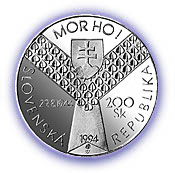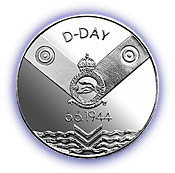-
NBS Tasks
Browse topics
- Monetary policy
- Financial market supervision
- Financial stability
- Banknotes and coins
- Payments
- Statistics
- Research
- Legislation
-
Publications
- Activity Report of the NBS Innovation Hub Annual Report Carbon Footprint Report of NBS Climate-related disclosures of NBS non-monetary policy portfolios Economic and Monetary Developments Financial Stability Report Investment Policy Statement of the National Bank of Slovakia Macroprudential Commentary
- Policy Briefs Report on the Activities of the Financial Market Supervision Unit Research Papers: Working and Occasional Papers (WP/OP) Statistical Bulletin Structural Challenges Other publications Sign up for your email notifications about publications
- About the Bank
- Media
- Frequently asked questions
-
For the public
Browse topics
- About the Bank
- Exchange rates and interest rates
- Banknotes and coins
- Payments
- Financial stability
- Financial market supervision
- Statistics
- Legislation
-
Publications
- Activity Report of the NBS Innovation Hub Annual Report Economic and Monetary Developments Financial Stability Report Macroprudential Commentary
- Report on the Activities of the Financial Market Supervision Unit Research Papers: Working and Occasional Papers (WP/OP) Statistical Bulletin Other publications Sign up for your email notifications about publications
- Frequently asked questions
- Media
- Careers
- Contact
50th anniversary of the Allied invasion of Normandy and the Slovak National Uprising against fascism
200 Sk commemorative silver coin


The Second World War was the most extensive and most destructive military conflict in the human history. Sixty one countries were gradually drawn into the conflict and more than 50 million people were killed.
The landing of the Allies in Normandy, under the code name of operation Overlord or D-Day, took place on 6.6.1944. It was the greatest air and sea operation of the Second World War, marked the opening of the second front in Europe and significantly accelerated the end of the Second World War. Slovaks also participated in the operation as part of four Czechoslovak air force units.
The Slovak National Uprising broke out on 29.8.1944 and was one of the most important military actions in German controlled territory. By it, the Slovaks joined the Allies in the Anti-Hitler coalition. Its main fighting force was formed by a sixty thousand strong army with partisans, who controlled the territory of central Slovakia for two months.
-
Coin description
Obverse:
The main motif is the impression of a flying bird in the shape of a letter V. The area of its wings is filled with lime leaves, the symbol of Slavonic community. The coat of arms of the Slovak Republic is placed in the centre of the upper part of the wings, above it is the battle cry MOR HO! The name of the state “SLOVENSKÁ REPUBLIKA”; the date of the beginning of the Slovak National Uprising, and the nominal value and year of issue are given in the field of the coin.
Reverse:
The impression of an aeroplane in the form of a letter V is depicted on the coin. It has raised symbols and identifying targets (concentric circles), of the Allied armies on both sides. In the centre of the letter is the symbol of the 312th Czechoslovak fighter squadron in Great Britain. Below it is the date of the landing of the Allied armies in France, with over it the inscription D-Day. Stylized waves are depicted in the lower margin and in the centre there are impressions of falling, shot-down, enemy aeroplanes in the shape of a V.
-
Coin details
Designer: Imrich Svitana Material: Ag 750, Cu 250 Weight: 20 g Diameter: 34 mm Edge: inscription: “SLOVÁCI PROTI FAŠIZMU”
(The Slovaks against Fascism)Producer: Kremnica Mint (Slovak Republic) Issuing volume: 37,600
of which 2,600 in proof qualityDemonetized: 10 150 in brilliant uncirculated quality (2002)
400 in brilliant uncirculated quality (2006)